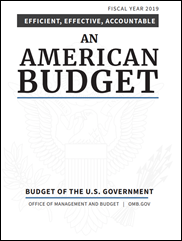Bruce Cerullo is chairman and CEO of Nordic of Madison, WI.

Tell me about yourself and the company.
I’m a Boston-area guy, growing up in a blue collar Italian family. Hospital secretary mom, high school janitor dad. What they taught us, since they didn’t have any money, was the power of love, education, and service to others. I’m back in the game because when I got a look at Nordic, they have a mission of service in the healthcare IT space.
In the 1990s, I led a workforce solutions provider called Cross Country TravCorps that is in the nurse, physician and allied health space. It was all about finding really great people who had a mission to service and deploying them to clients that had a need. Then Vitalize Consulting Solutions in the mid-2000s — same mission, same modus operandi, good people, mission-driven, deployed at hospitals in the healthcare IT space.
I straddle the light and the dark sides, “light” being running companies and leading companies and “dark” being private equity investing. When I was wearing my black hat, I ran into Nordic and said, this company has an interesting take on the healthcare IT consulting space. The more I learned, the more I liked. I was lucky enough to be able to invest and assume the leadership chair. So here I am, I’m doing what I like to do.
Being from Boston, what’s your perspective on Madison?
As a family-oriented guy, it’s a really nice, family-oriented place. Madison, as I’ve learned, is driven by the intellectual capital of two hallowed institutions, the University of Wisconsin-Madison and Epic in nearby Verona. I used to be the young person in all my companies. Now I’m the old dude walking down the halls. Nordic is about 850 strong, which is fairly remarkable for a company that’s only seven years old, and most of the folks are under 40 and the big population are under 35. As a 58-year-old feller, I’m like, OK, it’s a young place, it’s a dynamic place with a lot of smart people.
I think there’s a social mission here. It reminds me a little bit of Cambridge, Massachusetts. Smart people trying to do good work, and in our case, trying to do good work in the healthcare IT consulting space.
What is changing in consulting now that the peak of EHR implementations is over?
The good old days of brute-force implementation have passed. Consulting firms rode that wave. Those like Nordic that have evolved beyond that into what our clients’ needs are today and hopefully tomorrow will continue to thrive and succeed.
Nordic was once a high-quality, Epic-focused staff augmentation firm. It has involved into what we like to call a customized end-to-end solutions provider. Which is a nice way of saying that we do a whole bunch of things along the continuum that leverage the EHR and to help our clients finally get to the promised land, which is a return on a significant investment. Whether it’s optimization, rev cycle, training, population health, data analytics, and managed services that follow, those are services that organizations that are going to survive and thrive, like Nordic, will have to be able to provide clients. That’s where their needs are today.
What characteristics of a company allow it to react to such a dramatic change in market demand?
As my mother used to say, “God gave you two ears and only one mouth for a reason.” If you listen to your clients, it’s remarkable what they’ll tell you. In the case of Nordic — and again, I’ve only been the leader for two and a half years or so — Nordic has always been really good at listening to what the clients’ needs are. That’s hard enough. Then having the courage to spend some money, because it takes money to make money, so to speak, to invest.
For example, our managed service offering. If you asked me a year and a half ago, should we spend as much building out a physical plant as we have? Would the customers be ready for it? It’s amazing. All of our customers have a mandate today to do more with less. To locate the Holy Grail of better quality at a lower cost, with happy patients and happy docs. To do that, they need to take their best and brightest staff folks to do the interesting work so they don’t lose them to a competitive hospital. They’re leveraging folks like Nordic to outsource the application support — very important, but less-sexy, less-interesting work to do. That’s one of the fastest-growing parts of our business. You see hospitals adopting strategies that, up to now, other industries have had in spades, but hospitals tend to be a little behind that curve.
What has changed as EHR vendors have deepened their hosting and IT services offerings?
Our work was changing, not necessarily because respected organizations like Epic are moving into the hosting space. They’re doing it for the same reasons that we are evolving, because the clients’ needs are evolving as well. Once upon a time, hospitals ran their own food service, laundry, and security. For very good reasons, they brought in partners who could do it theoretically better for less money. Now that they’ve spent tens or hundreds of millions of dollars on a very necessary investment, their EHR, they have to find ways to get full value from it and to reduce their ongoing operating cost. Epic is probably driven by some of the same business decisions that we are, and that is, what does the client need?
What impact have you seen from the tax law changes, including the possibility that individuals such as consultants might gain an advantage in billing under a 1099 arrangement instead of being a consulting firm’s W-2 employee?
I would say nothing directly yet. We are employee-owned and we’re privately equity-backed. That’s part of Nordic’s special sauce. All of our employees become owners of the company through our employee stock option plan or our consultant equity participation plan. What a concept — if you want someone to act like an owner, you’d better treat them as an owner. All of our folks have a vested interest in our clients’ success, because if our clients succeed, in theory, we grow. At the company level, we’re not doing anything different because every free dollar of cash that we generate, we’re plowing back into evolving our model.
We offer a “freedom to choose” employment model, which is very different than the Big Sixes or the Big Fives, whatever they call themselves these days. The international outsourcers and the Big Sixers tend to have an employed model. We offer our consultants the opportunity to be employed “in a permanent capacity.” We offer what we call fixed-term, temporary engagements. But in both of those cases, they are our W-2 employees. The people who would be most impacted by the tax law change, the independent consultants who are either 1099 or what we call corp-to-corp, are a very small percentage of our population of people and that’s by design.
What was your reaction when Tech Mahindra acquired The HCI Group? What does it mean when a big conglomerate from India buys a US healthcare IT consulting firm?
I’ve spent a good part of the last 20 years investing in companies. I’ve never had an original idea, but I’m pretty good at picking good people with a pretty good business idea. Since life is too short to work with a-holes, the “good people” part of the equation matters a lot and the work that they do matters a lot.
Most of the time, when the big gobble the medium-to-small, over time what made the medium-to-small special tends to go away. The history of healthcare IT landscape is littered with firms that were very special in their own right and became less so when they became part of somebody else’s business model.
It’s not surprising to me that the international outsourcers would like a real stake in the US healthcare IT game. It’s a pretty gigantic pie. Some of what has made them great in other sectors will make them a formidable competitor to a Nordic-like organization in healthcare.
But at the same time, how many firms have tried to get into healthcare — whether it’s Google or Microsoft or whoever — and realized, oh, it really is different? As our esteemed President said, “Who knew healthcare was so complicated?” I understand why the international outsourcers are interested in firms like HCI. Having been at this game a long time, we are choosing an independent, US-focused path.
As someone who has been both a leader and an investor in the health IT market, what are the most interesting things happening in it?
It is a time of convergence. You’ve got technology converging with infrastructure converging with innovation and converging with human collaboration. To find that Holy Grail of healthcare, which is higher quality, lower cost, happy patients and docs.
But what people forget is that convergence happened because Uncle Sam spent money and Meaningful Use dollars. The functionality of the major EHRs — Epic, Cerner, and Meditech are the three survivors — would not have happened without them. But people are really quick to criticize either the Meaningful Use Program and/or the leaders of these important EHR vendors.
The reality is, without the money and the innovation, we wouldn’t be where we are today. Health systems have what they need to develop credible digital health strategies. Up to now, you could talk it, but you couldn’t necessarily walk it. So I’m bullish. It’s that time of convergence. Finally, the CIO and the CMIO, arguably, have a real seat at the table. I get chest pain when I think of their jobs, because for them to be successful, patients, family members, clinicians, and hospital employees have to be happy. How’s that for pressure?
Summation Health Ventures is a private equity firm in LA that is funded by MemorialCare and Cedars-Sinai. MemorialCare is Scott Joslyn, the CIO there, and you know Darren Dworkin. So Darren Dworkin, the CIO at Cedars-Sinai, Scott Joslyn, and their respective CEOs have formed their own private equity firm. That’s how much convergence has occurred. You have hospitals that are not only driving innovation, but actually funding it. That’s exciting.
I’m associated with a Boston-based firmed called SV Health Investors. SV probably gets 20 business plans a month. They’re from some really smart people with really innovative ideas that a client would never spend the money on. But if they then called Summation to say, “What do you think?” and if Darren or Scott say, “Hey, great idea,” then that’s where the decision should be made. Because great ideas are great, but if no one will pay for them, you’re not going to be in business very long.
That’s a real-life example of how much convergence is occurring in healthcare. I think it’s good. We’re finally at a point where we have what we need to try to advance the cause. That’s why I got back in the game.
Do you have any final thoughts?
Actually, with your permission, I’d like to promote something that is very important. I don’t know if you’re aware, but CHIME has formed an Opioid Task Force. I’m a volunteer with that organization and I’m trying to raise its profile. The effort is being led by who I consider a very courageous guy in Ed Kopetsky, who’s the CIO at Lucile Packard Children’s. He lost a son to an overdose just a couple of years ago. He’s trying to turn a bad thing into a good thing.
Jim Turnbull, who’s the CIO at the University of Utah, and Russ Branzell, who’s the CHIME lead, came together and said, “Hey, CHIME Foundation members — what can we do as a group that’s uniquely qualified in the IT space to try to help combat this scourge?” Fifty or 60,000 people die every year of opioid overdoses. It’s like the Vietnam War every year. My thought is, to the degree that there are folks who read this interview who have a special talent, treasure, or time on their hands who can help us, we’re still looking for a few good people to join. We would love for them to reach out to the folks at CHIME to volunteer their interest.
Comments Off on HIStalk Interviews Bruce Cerullo, CEO, Nordic





















































Merry Christmas and a Happy New Year to the HIStalk crowd. I wish you the joys of the season!